There is only one thing more beautiful than strolling through Rome.
Strolling through Rome knowing that, right there, in that exact spot, some of the most celebrated actors and directors in history created art and filmed iconic scenes, leaving us with stunning movies that have spanned generations.
To do so, they chose an extraordinary film set: the Eternal City, with its rich history, magnificent monuments and fountains, cobblestone streets, and unmistakable scents coming from the restaurants, bars, and numerous venues in the city that offer the best Italian food.
I want to take you on a one-day itinerary through some of the most beautiful and fascinating spots in the city, which were also carefully chosen by filmmakers and cinematographers for their movies.
If you’ve had the chance to visit Rome, you’ll understand why they made that choice. If you haven’t been yet, what better way to make you want to go even more?
Jump to a section of this article
The Best Movies Set in Rome
Roman Holiday
We depart from Trinita dei Monti, the stunning 16th-century church that overlooks the square of Piazza di Spagna from the top of Rome’s most famous staircase.
From up here, we can enjoy a breathtaking panoramic view of the city before descending one of the world’s most famous staircases: the Spanish Steps.
These 135 steps, built in the 18th century, have become a symbol of Rome, attracting artists, poets, and travelers from all over the world.
This is where our journey begins, not only because it’s one of the places that best represents Rome, but also because the first film I want to mention is perhaps the one that showcases the city the most, and in the most romantic way possible: Roman Holiday (1953).
This classic follows the enchanting love story between Princess Ann (Audrey Hepburn), a young royal escaping her duties for a day of freedom, and Joe Bradley (Gregory Peck), an American journalist who takes her on an unforgettable tour of Rome.
Through their adventures, we see the Eternal City in all its splendor. The image of Princess Ann enjoying a delicious gelato while sitting on the Spanish Steps, under the lovestruck gaze of Joe, is, to me, the most beautiful way to show Rome to the world.
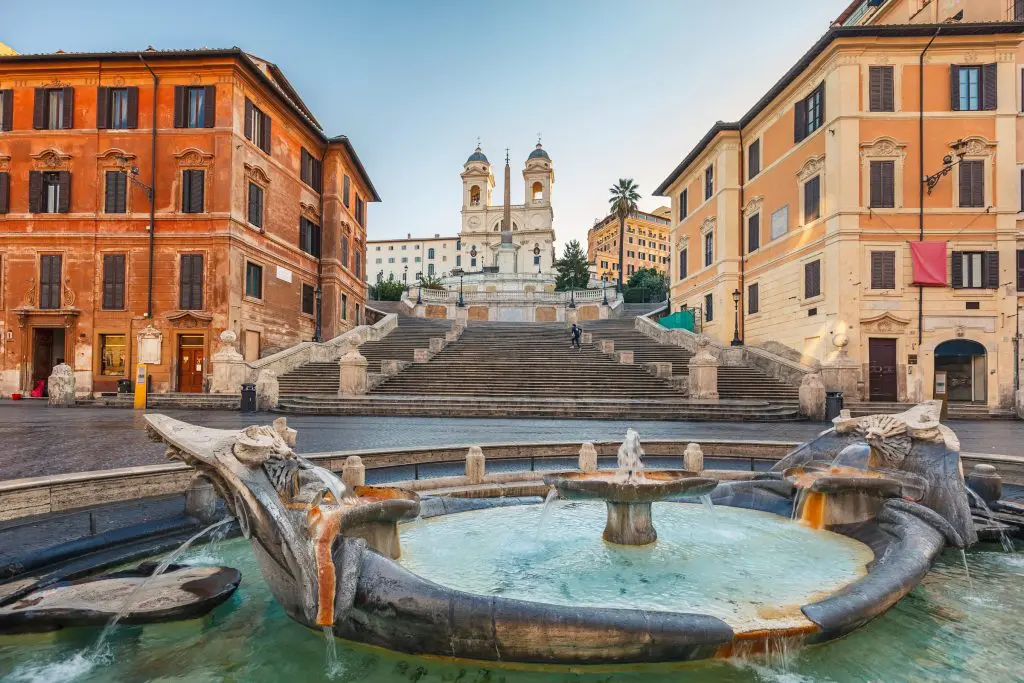
La Dolce Vita
Let’s grab a gelato from one of the many gelaterias nearby and stroll over to the Trevi Fountain, just a 10-minute walk away.
One of Rome’s most iconic landmarks, this stunning Baroque fountain designed by Niccolo Salvi and completed in 1762, gained even more fame thanks to La Dolce Vita (1960).
In this film, Anita Ekberg famously wades into the fountain, inviting Marcello Mastroianni to join her in the water, creating one of the most unforgettable scenes in cinema history.
You won’t be able to take a dip like Anita, but you can throw a coin into the fountain, ensuring, according to tradition, that you’ll return to Rome. And if you throw two coins, legend says you’ll also find love.
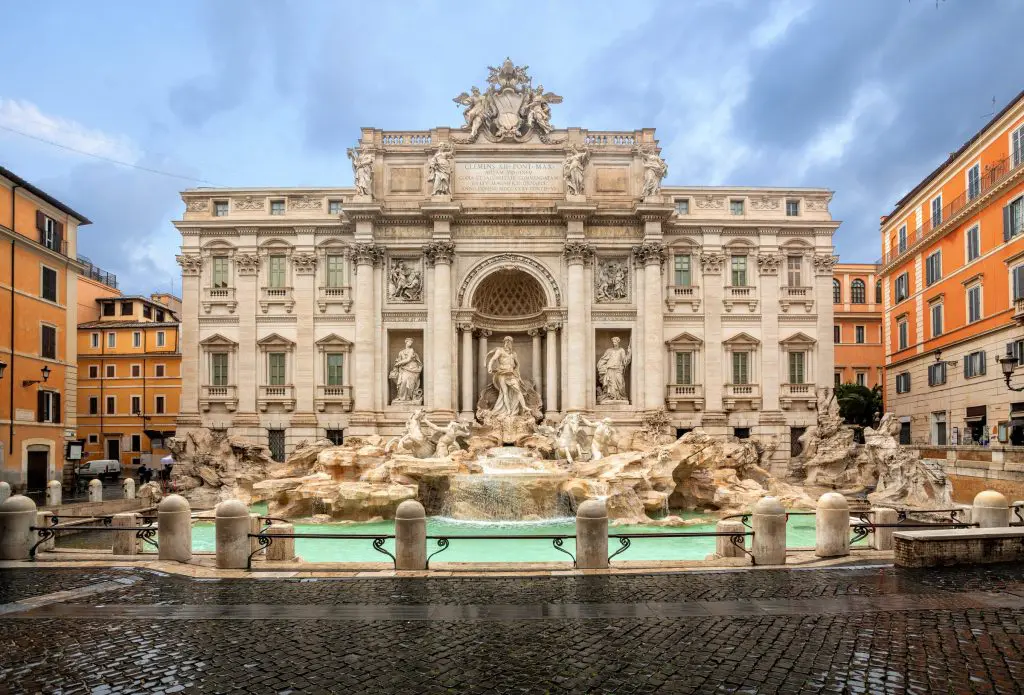
The Talented Mr Ripley
Let’s continue our stroll toward the next stop on our itinerary. From Via delle Muratte, turn left, but wait, here’s the Church of St. Ignatius of Loyola.
It’s definitely worth a visit because of its stunning Baroque architecture and the incredible illusionistic frescoes on the ceiling, which make the church appear much taller than it actually is.
The most famous work is the Assumption of The Virgin by Andrea Pozzo, which creates a breathtaking visual effect.
Let’s continue our walk along Via del Seminario, and here we must stop once again, as we’ve found ourselves in front of the Pantheon.
This iconic building is one of the best-preserved ancient Roman monuments, famous for its massive domed roof, which was an engineering marvel of its time.
Originally built as a temple for all Roman gods, the Pantheon has been in continuous use for nearly 2,000 years and now serves as a church.
After taking a few photos, we finally head towards Piazza Navona, one of the most beautiful and vibrant squares in Rome, and our next stop.
Famous for its stunning Fountain of The Four Rivers by Gian Lorenzo Bernini, its Baroque architecture, and lively atmosphere, Piazza Navona is a beloved spot for both locals and visitors.
Every time I walk through the square and see people sitting at the outdoor cafés, I’m reminded of a scene from this movie: The Talented Mr. Ripley (1999).
Based on Patricia Highsmith’s novel, the film stars Matt Damon as Tom Ripley, a clever but dangerous young man who lies and deceives his way into the life of Dickie Greenleaf (played by Jude Law), a wealthy and carefree young man living in Italy.
In the scene shot in Piazza Navona, Dickie and Tom are sitting at an outdoor café, enjoying their coffee, when Philip Seymour Hoffman, portraying the arrogant and privileged Freddie Miles, arrives in his car.
Freddie’s dramatic entrance highlights his sense of entitlement and overbearing personality. As he approaches, a tense confrontation ensues between him and Dickie, deepening the underlying tensions and rivalries between the characters.
Nowadays, you can’t drive into Piazza Navona, and to be honest, I’d also recommend having your coffee outside the square, as bars nearby often serve better coffee at lower prices.
That said, you can stroll through the square and admire the beautiful fountains that have recently been renovated.
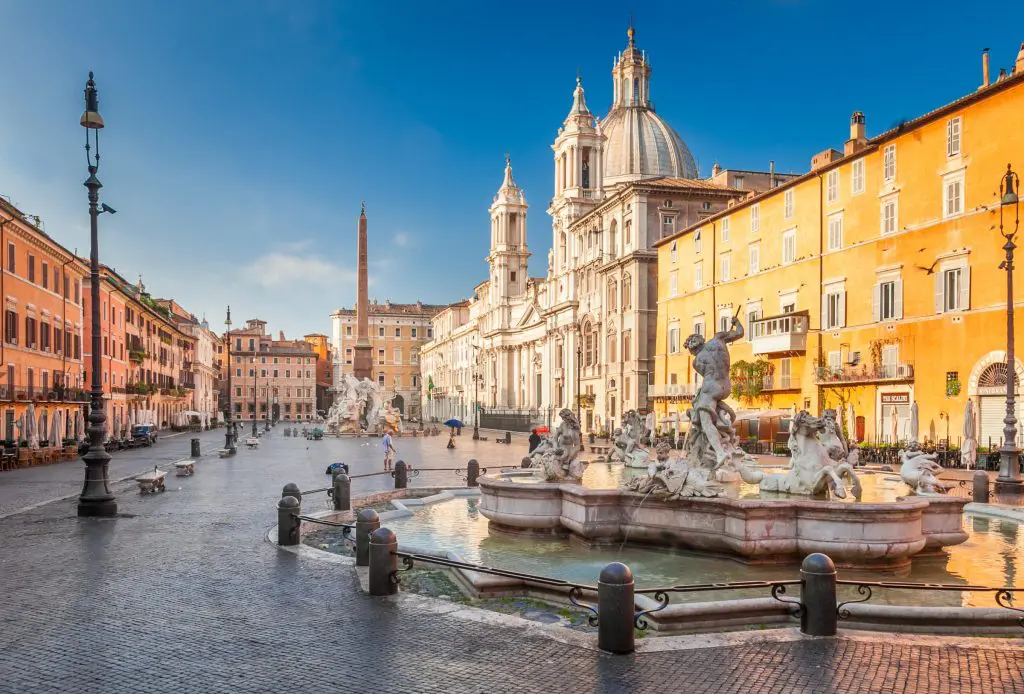
Eat Pray Love
We’ve walked enough for now, and it might be time for lunch. What better opportunity to stop and enjoy a meal at a traditional Roman restaurant?
We’re lucky. Just around the corner, in Largo Febo, there’s Santa Lucia Restaurant, one of the places chosen by Julia Roberts in the film Eat Pray Love (2010).
In this movie, based on the memoir by Elizabeth Gilbert, Julia Roberts’ character, Liz Gilbert, embarks on a transformative journey of self-discovery after a divorce.
During her time in Rome, she enjoys the simple pleasures of life. One of the most memorable scenes is when Liz relishes a dish of pasta, a symbolic moment of embracing Italy’s beauty, its culture, and, of course, its incredible food.

Angels & Demons
Refueled? Then let’s continue our tour! Let’s take the stunning Via dei Coronari, one of the most charming streets in Rome, famous for its antique shops and timeless atmosphere, once a key route for pilgrims heading to St. Peter’s Basilica.
From there, we’ll cross the iconic Ponte Sant’Angelo, a bridge adorned with magnificent statues of angels, designed by Gian Lorenzo Bernini in the 17th century, that leads to the majestic Castel Sant’Angelo.
Each angel on the bridge holds an instrument of Christ’s Passion, adding a deep spiritual meaning to this already breathtaking landmark.
Castel Sant’Angelo is now a museum, but it was originally built as Emperor Hadrian’s mausoleum in the 2nd century AD and later became a fortress, papal residence, and prison.
Have you already guessed which movie I’m about to mention? Yes, it’s Angels & Demons.
This 2009 thriller, directed by Ron Howard and based on Dan Brown’s novel, follows Robert Langdon (played by Tom Hanks) as he races against time to stop a deadly conspiracy threatening the Vatican.
The film takes viewers on a gripping journey through Rome’s most famous landmarks, including Ponte Sant’Angelo and Castel Sant’Angelo, which play a crucial role in the story.
In one of the movie’s most intense sequences, Langdon discovers that Castel Sant’Angelo hides a secret passage leading directly to the Vatican, a route historically used by popes in times of danger.
The fortress’s enigmatic atmosphere and rich history make it an ideal backdrop for this gripping tale of faith, science, and mystery.
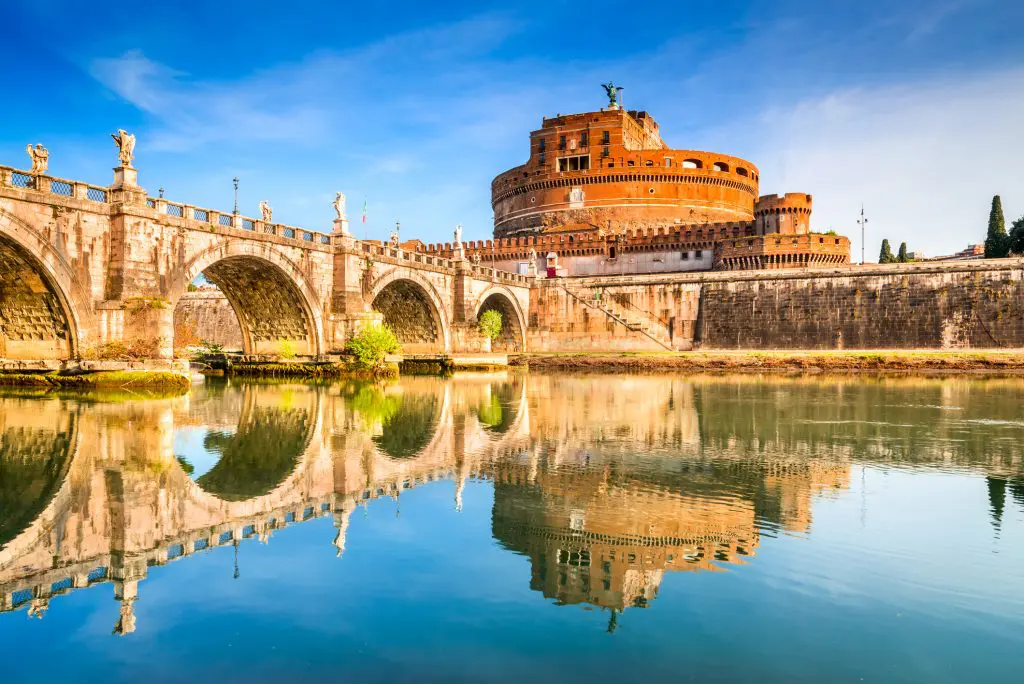
To Rome With Love
In Rome, the sacred and the profane constantly intertwine, and a visitor’s visual appetite is always satisfied, no matter their taste.
Over the centuries, countless artists have described, narrated, painted, or sculpted the city, capturing its essence in their works.
In more recent times, another legendary director chose Rome as the backdrop for an entire film, a lighthearted yet entertaining comedy, crafted in his signature style.
I am talking about Woody Allen, who set much of To Rome with Love in Trastevere, one of the city’s most charming and lively neighborhoods.
This 2012 film weaves together multiple stories of love, ambition, and unexpected encounters, all set against the backdrop of the Eternal City’s beauty.
Allen took full advantage of Trastevere’s unique atmosphere, its narrow cobblestone streets, historic buildings, lively piazzas, and bohemian charm to create a film that feels both timeless and unmistakably Roman.
To reach Trastevere, if you’re not too tired, you might enjoy a 20-minute walk and pass through Via Giulia, one of the city’s most beautiful historic streets.
Built during the Renaissance, it was designed by Donato Bramante and is known for its elegant palaces, hidden courtyards, and stunning Baroque details, making it a perfect route to soak in Rome’s beauty on your way to Trastevere.
We could wrap up our day here, perhaps with an aperitif or dinner at one of the many fantastic restaurants in the area (honestly, you’ll be spoiled for choice), but we’re unstoppable, so let’s make another stop on this long but memorable day.
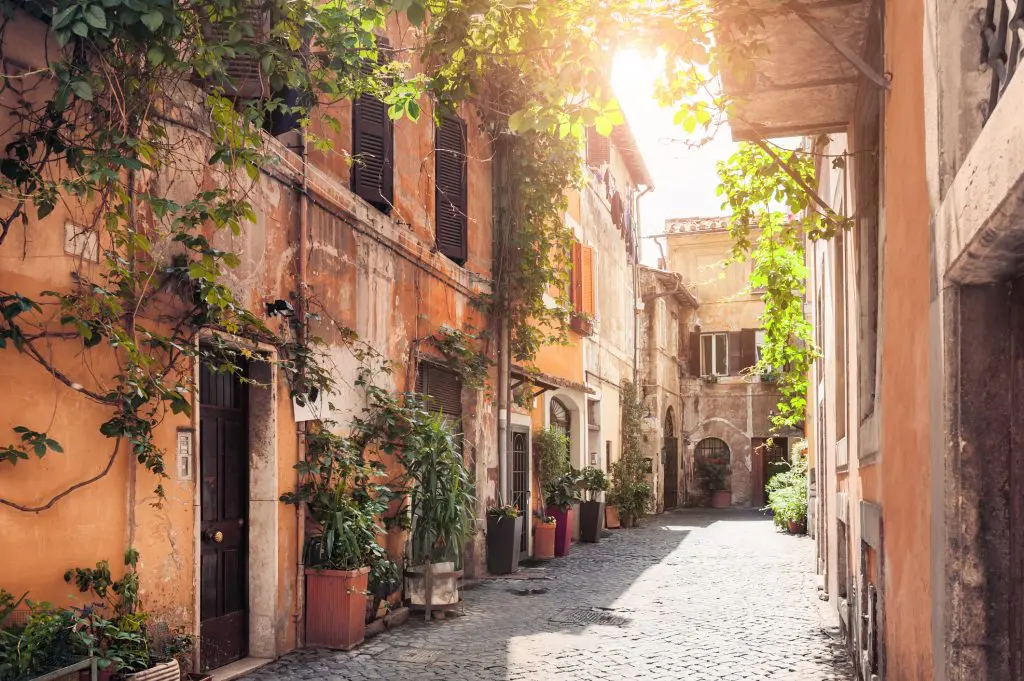
La Grande Bellezza (The Great Beauty)
The Janiculum Hill isn’t technically one of the seven hills of Rome, but it offers the best panoramic view of the city.
If we’re there around sunset, it’s the perfect time to take in the beauty of Rome as the golden light bathes the city, making it a truly unforgettable moment.
It’s a local tradition, especially among the younger crowd, to come here with a date. This is where they go to impress their partner with one of the most beautiful views in Rome.
At the top, you’ll find the Fontanone, a monumental fountain built in the 17th century, designed by Giovanni Fontana. The majestic fountain is not only a piece of art, but also a symbol of the city’s water system and its connection to the surrounding hills.
It was here at the Fontanone that Italian director Paolo Sorrentino, winner of the Academy Award for Best Foreign Language Film, shot one of the most memorable scenes of his masterpiece, La Grande Bellezza (The Great Beauty).
The film, which won the Oscar in 2014, follows Jep Gambardella, a journalist and former novelist, as he reflects on his life amidst the beauty, decadence, and complexities of Rome.
The film perfectly captures the contrast between timeless beauty and the fleeting nature of life, and the scene shot at Gianicolo emphasizes the city’s grandeur, echoing the themes of nostalgia, youth, and the passage of time.
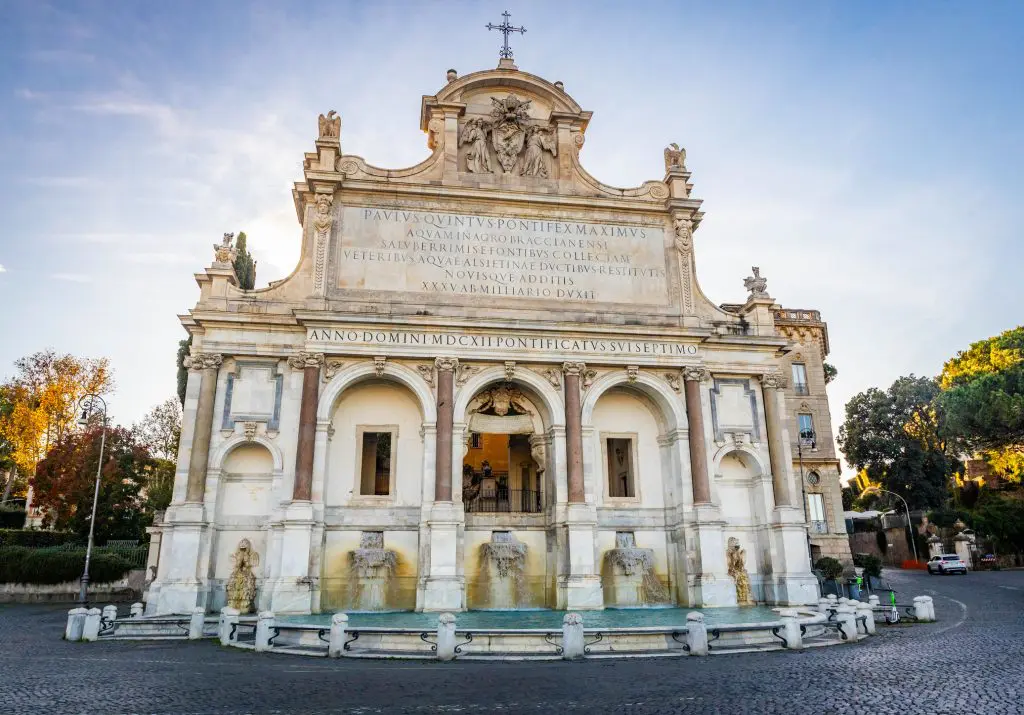
Gladiator
Our day is coming to an end, but the cinematic journey through the city could continue for much longer. How could I forget? I missed the Colosseum. That’s true, the Colosseum is the symbol of Rome, and that’s why I saved it for last.
The most famous ancient amphitheater in the world, built in the 1st century AD, was used for gladiatorial contests, public spectacles, and other events.
It’s one of the greatest architectural and engineering feats of ancient Rome and remains one of the city’s most iconic landmarks.
It has been the setting for many films, including Gladiator (2000), where it plays a central role. In this epic film, starring Russell Crowe as Maximus, the Colosseum is depicted as the place where gladiators fight to the death.
However, much of the Colosseum in the film was recreated using CGI (computer-generated imagery), as it was filmed on sets designed to replicate the arena’s grandeur.
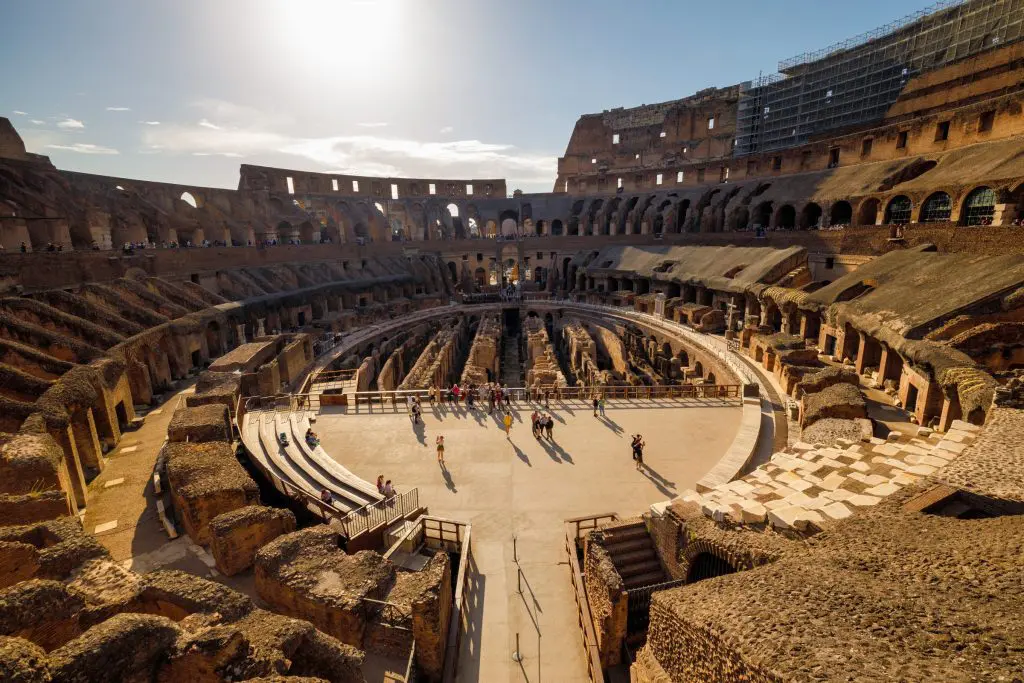
Cinecitta Studios
The global and Italian film industries have truly found a home in Rome, and the number of films shot here is countless.
The relationship between Rome and cinema is also evident in the fact that the Cinecitta Studios are in Rome. Cinecitta is one of the most famous film studios in the world, often referred to as Hollywood on The Tiber.
Founded in 1937, it has been the birthplace of many iconic films, both Italian and international. It has hosted productions like Ben-Hur, Gangs of New York, and Rome (the HBO series).
The studios have played a major role in shaping the history of cinema, and today, they remain a key location for filmmakers looking to create epic productions.
Cinecitta also has a museum, where visitors can explore the history of cinema and see sets and exhibits from some of the most famous films ever made.
Now that you can visit Rome through the eyes of a director, you can enjoy it even more.
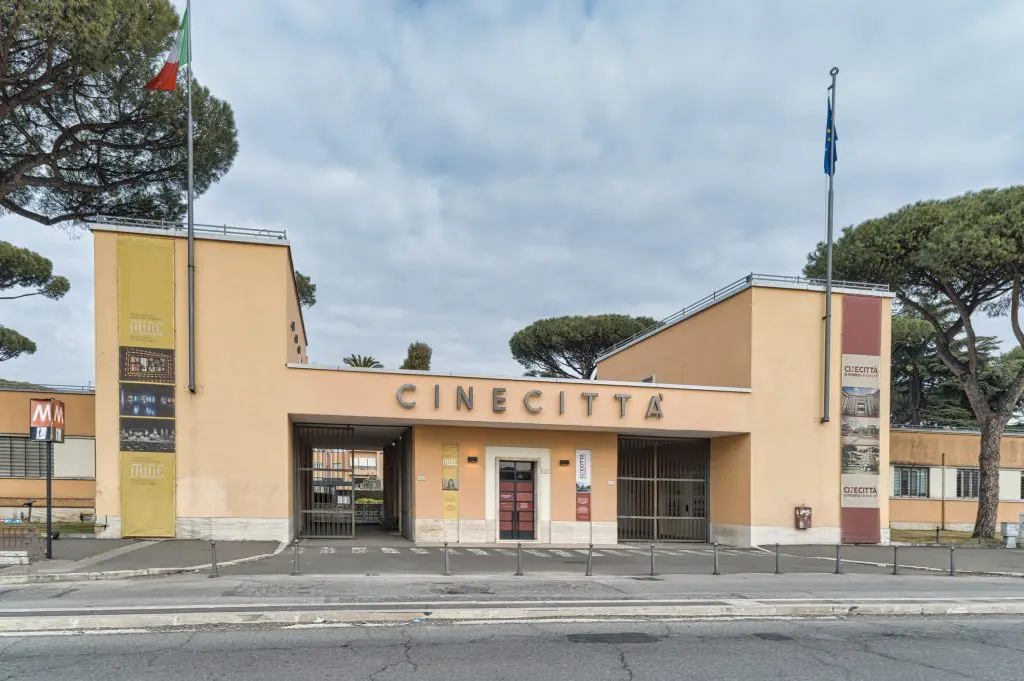

Italy Destination Expert & Rome City Host